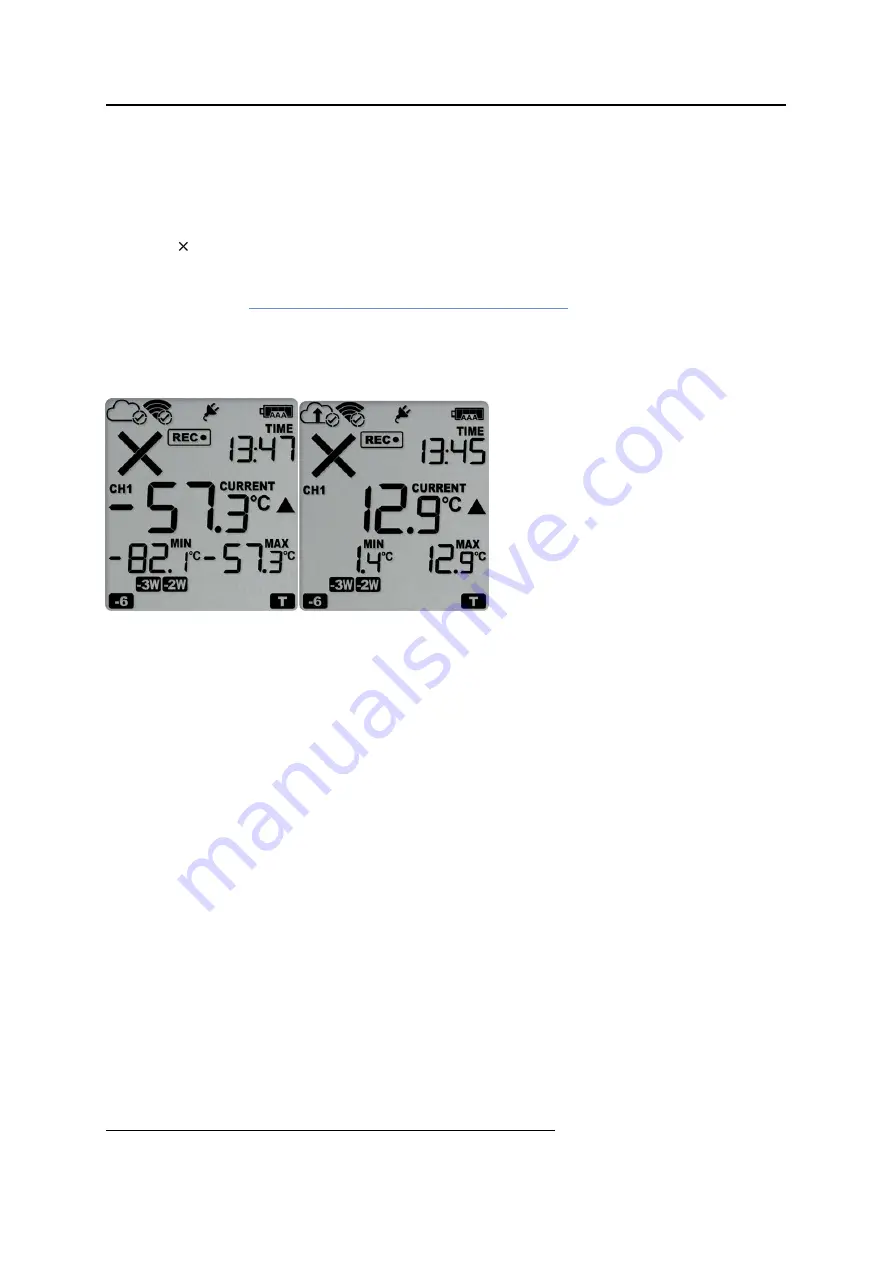
Preparing a UTREL30-WiFi for first use
UTREL30-WiFi User Guide
25
Alarm Configuration Options
The UTREL30-WiFi can display an alarm if one or more of the configured alarm trigger
conditions have been met. This is indicated on the display by showing the Alarm
Indicator and a Day Alarm Marker.
is shown for an alarm triggered today, other markers are shown for alarms triggered on
previous days, see
Day Alarm Matrix Display while recording
is displayed for which day. Alarms are registered separately for each channel, and will
only be shown on the corresponding channel's screen. Additionally, the red LED will
blink every 4 seconds. The LED blinks until active Alarms on both channels are cleared.
Each alarm trigger condition consists of a threshold temperature value, an activation
type (which can be instant, consecutive or accumulative
4
) and a delay time, if it is not an
instant alarm.
If an alarm trigger condition requires readings to exceed an upper threshold temperature
it is called an
upper alarm
. If an alarm trigger condition requires readings to go below a
lower threshold it is called a
lower alarm
.
All alarm trigger conditions are entered in the Alarm Settings tab during configuration
of the logger with LogTag
®
Analyzer. Alarms are configured separately for each channel.
If you have chosen to log only one of the channels, the controls for the other channel
are not available.
The screen shows an example where:
l
the upper primary alarm for channel 1 is triggered when the temperature is -70 °C
or above for an accumulative time of 10 hours.
l
the lower primary alarm for channel 1 is triggered when the temperature is -80 °C
or below continuously for 1 hour.
Figure 4:
Sample Alarm Configuration Settings for channel 1 of a UTREL30-WiFi
4
l
Instant = one temperature reading is above (below) the threshold
l
Consecutive = temperature readings are above (below) the threshold for the time defined in the activation delay without
interruption
l
Accumulative = temperature readings are above (below) the threshold for the total time defined in the activation delay
time, but may not necessarily be sequential






























